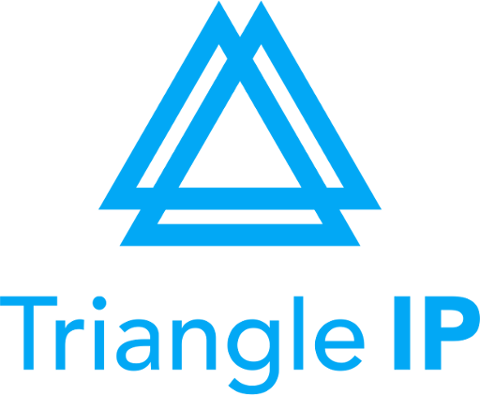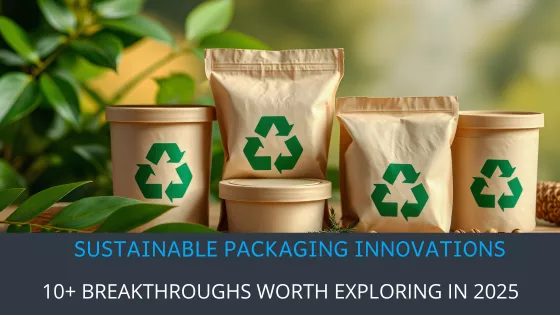| TL;DR: Brands are racing to reduce waste, comply with regulations, and maintain a strong shelf life. This article spotlights 10+ recently patented sustainable packaging innovations from 2025. Our list includes mono-material films, high-barrier papers, recyclable valves, thin-liner fiber bottles, and PET insulated liners. Each example lists the patent details, market deployment, funding or partnerships, and any awards. Use it as a quick guide to understand where sustainable packaging is headed right now. |
Packaging has always been a silent driver of innovation. In 2025, we see real progress: mono-material films with high barriers, paper packs that heat-seal, recyclable fitments, and curbside-ready thermal liners.
We reviewed hundreds of public filings, launches, and awards to highlight patent-backed innovations proving what works now. Many are already on shelves with world-leading brands like S&B Foods, Elmex, and Huhtamaki.
Why does this matter? Because packaging still drives over 36% of global plastic use, while policies like the EU Packaging & Packaging Waste Regulation (PPWR) raise the bar. Innovators can’t afford to wait anymore. Teams need ideas that are both performant and recoverable.
This article explores 10+ real-world sustainable packaging innovations in 2025. And after the examples, we’ll also show how to turn similar concepts into assets using the Triangle IP (TIP) Tool™.
Let’s dive in!
1.GL BARRIER™ Mono-Material PP/PE Barrier Films
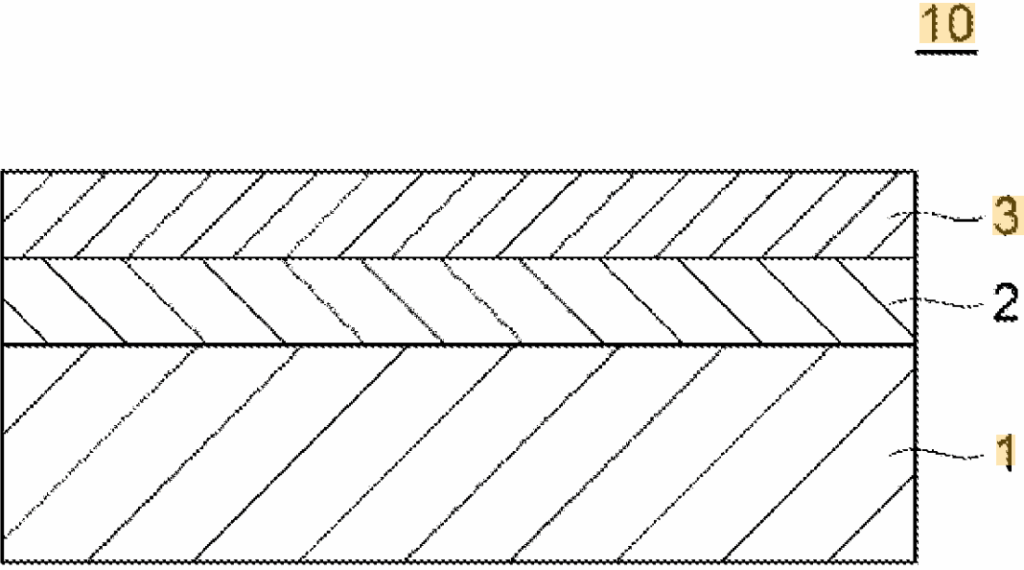
Source- Google Patent
In flexible packaging, brands have struggled to strike a balance between recyclability and high barriers. Toppan has solved this challenge with a mono-material PP/PE laminate that still blocks oxygen and moisture. The structure features a polyolefin base, a thin inorganic barrier layer, and a soft PVA coating with a surface hardness ≤1.5 GPa. This coating prevents cracks from forming during bending or heating, thereby maintaining the integrity of the barrier layer. The result is strong performance and easy recyclability.
Key Details of the Innovation
- Company: TOPPAN Inc. (Japan)
- Year Introduced: TOPPAN introduced Japan’s first all-PP mono-material retort pouch in 2025 and expanded the use of GL BARRIER in the food industry.
- Patent Status: US 12,371,236 B2 (Granted July 29, 2025)
- Funding/Partnerships: No external funding disclosed. Activity is in-house with visible capacity investments. For example, TOPPAN’s new Czech barrier-film plant (GL BARRIER) is being built to supply the European market. The production is scheduled to begin in late 2024, and groundbreaking has already been completed.
- Market Deployment: GL BARRIER mono-material PP/PE films are already commercialized (e.g., all-PP/PE variants; retortable PP) and actively adopted. 2025 press confirms domestic adoption of all-PP retort pouches.
- Award/Recognition: In 2025, Toppan’s GL-BARRIER-based “Tube-like Pouch” for Ajinomoto won the METI Minister’s Award at the Japan Packaging Competition.
2. Recyclable Paper Bag with Glassine Paper Window

Source- Google Patent
Paper bags with plastic windows look good on the shelf, but they usually fail paper-stream recycling and add extra plastics. This design provides a clear window for shoppers while maintaining the pack’s recyclability in the paper stream. It makes paper the main component and limits the use of non-paper layers or adhesives. The patent specifies paper weights between 35 and 160 g/m² and laminate thicknesses between 35 and 310 µm. It also includes an optional transparent or translucent area bonded into the paper. This allows the pack to run smoothly on standard heat-seal lines used for pasta, bakery, or dry goods. What makes it stand out is how it achieves visibility without the use of plastic windows. This design aligns with EU paperization goals and mill-recyclability standards.
Key Details of the Innovation
- Company: A.G. & Figli Srl (Italy); inventors Stefano Giusti & Martina Giusti
- Year Introduced: 2025 (U.S. patent grant/publication in week 03 of the USPTO Gazette).
- Patent Status: US Patent 12,203,218 B2, titled “Recyclable Composite Material, in Particular for Food Packaging,” granted on January 21, 2025.
- Market Deployment: Public sources confirm category-level deployments of paper bags with recyclable cellulose/glassine windows in Europe. For example, Mondi × Fiorini pasta bags were launched in the market.
3. Aroma Protection Valve (VIS 10F)

Source- Google Patent
Freshly roasted coffee continues to release carbon dioxide for several weeks. This gas buildup can cause coffee bags to swell or even burst. To avoid this, many roasters pre-degas their coffee, but that often reduces freshness. Syntegon has developed a new one-way degassing valve that lets CO₂ escape while keeping oxygen out. What makes it special is that it now works with recyclable mono-material films and uses ultrasonic sealing instead of adhesives. This keeps the entire package compatible with recycling systems.
Key Details of the Innovation
- Company: Syntegon Technology (Germany)
- Year Introduced: Active commercial promotion and case studies in 2025 (e.g., NewCoffee deployment on Syntegon PMX line)
- Patent Status: US 12,252,322 B2 (Mar 18, 2025): Syntegon’s valve uses a floating membrane on a base film to simplify production and cut material use. US 12,391,449 B2 (Aug 19, 2025): Introduces adhesive-free ultrasonic welding for aroma valves to boost recyclability and joining quality.
- Funding/Partnerships: Development appears in-house alongside Syntegon’s baggers/valve applicators.
- Market Deployment: Valve + applicators shipping with Syntegon PMX coffee baggers. The NewCoffee case (2025) demonstrates automatic valve insertion at rates of up to 65–100 bags/min. Converters (e.g., Rootree, Canada) automated internal valve insertion via Syntegon CVA applicator to scale recyclable/compostable coffee bags. VIS 10F inside valves are certified recyclable across Europe by cyclos-HTP and listed with NexTrex acceptance.
Turn inspiration into action. Score your top concepts with the Idea Evaluation Matrix and align R&D, ops, and marketing on next steps.
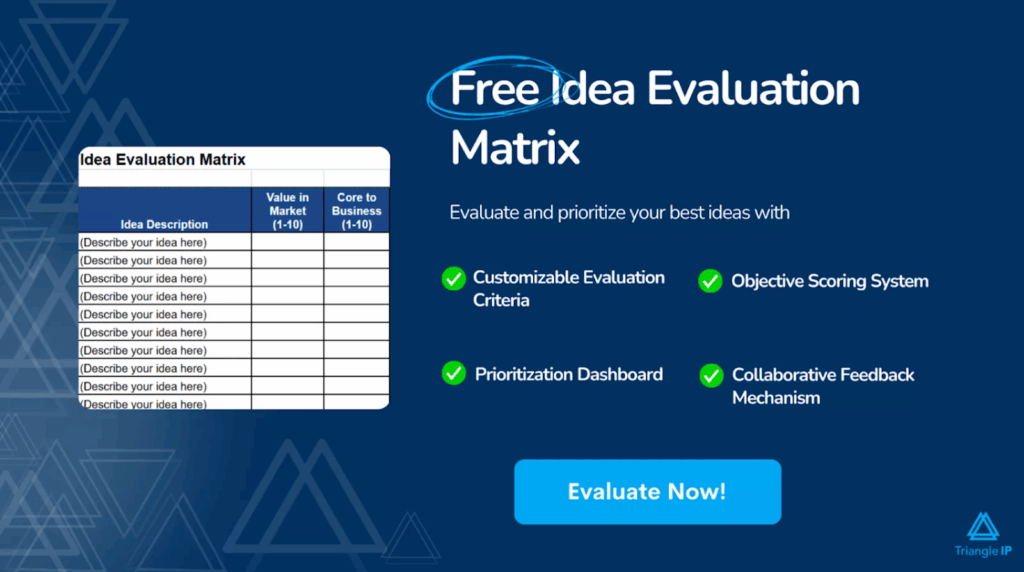
4. RyPax Paper Bottle

Source- RyPax
Traditional glass and plastic bottles have a significant carbon footprint and are challenging to make lighter without compromising their strength. Early versions of “paper bottles” attempted to address this issue but required thick plastic liners inside, which made recycling more challenging. Wing Fat’s new design changes that. The bottle’s outer body is made from molded pulp. A very thin internal liner is added only to keep the liquid sealed and maintain barriers. This cuts plastic use dramatically but still gives a rigid, shelf-ready shape. The patent also details an efficient production process using a mold, liner applicator, and liner insertion method. This makes it easier for manufacturers to scale production quickly.
Key Details of the Innovation
- Company: Wing Fat (Henan) Molded Fiber Technology Development Co., Ltd
- Patent Status: US 12,351,357 B2 (Integral pulp-molded bottle…), granted July 8, 2025. The family includes WO 2021/228262 and EP 4079965 B1 (Apr 24, 2024).
- Market Deployment: The market adoption of paper bottles is gaining strong momentum. Between 2024 and 2025, Diageo tested paper bottles with a thin PET liner for its popular brands, Baileys and Johnnie Walker. Around the same time, Paboco partnered with Blue Ocean Closures to introduce a fully market-ready paper bottle and paper cap. Their design features a lightweight barrier under 2 grams and is expected to reach store shelves in 2025.
Also Read: 20+ Global Food Packaging Innovations That Ruled 2025
5. Fresh Fiber Ready Meal Tray

Source- Huhtamaki
Fiber trays are a popular choice for sustainable food packaging, but they come with a challenge. When barrier films are added to protect against grease or moisture, they often make recycling difficult. These films can contaminate paper recycling streams or stick so tightly that consumers can’t separate them from the tray. Huhtamaki has solved this problem with a smart new design. Their tray is made from molded pulp and includes a peelable laminate layer on the food-contact side. This layer works as a barrier during use but can be easily peeled off afterward. Once removed, the fiber tray can be recycled or composted separately, making it both practical and eco-friendly.
Key Details of the Innovation
- Company: Huhtamaki Molded Fiber Technology B.V. (Netherlands)
- Patent Status: US 12,240,673 B2 (Packaging unit from a moulded pulp material with peelable laminated layer…) granted Mar 4, 2025.
- Funding/Partnerships: Technology developed in-house within Huhtamaki’s molded-fiber business
- Market Deployment: Huhtamaki already supplies fiber ready-meal and molded-fiber trays at scale. These oven- and microwave-safe trays demonstrate strong commercial potential for peelable laminate versions.
6. Nestlé’s Self-Packing Cheese

Source- Campaigns of the World
Cheese normally comes wrapped in fossil-plastic film. That plastic becomes waste, and the cheese-making process also leaves behind whey that often gets discarded. Nestlé Central America and Ogilvy Colombia call this out as a double waste problem: unused byproduct and single-use plastic.
Their ‘Self-Packing Cheese’ turns that waste into the packaging itself. They convert leftover whey into PHA, a biopolymer with plastic-like performance that can fully biodegrade. The film keeps freshness, taste, and food safety under FDA international standards, and it reportedly breaks down in about 300 days. The wrapper aims to remove virgin fossil plastic from the cheese pack while giving whey a second life.
Key Details of the Innovation
- Company: Nestlé Central America in collaboration with Ogilvy Colombia
- Patent Status: The “Self-Packing Cheese” film is described as proprietary, but no public patent number has been disclosed as of May–June 2025.
- Funding / Partnerships: Developed with Ogilvy Colombia’s Impact Lab as a circular packaging model.
- Market Deployment: Nestlé is testing the biodegradable film on its ¡Qué Rico! cheese line in Panama. The pilot targets 5,500 tons of product packed in 100% whey-based material.
7. EPIK LOK® Child-Resistant Paperboard Carton
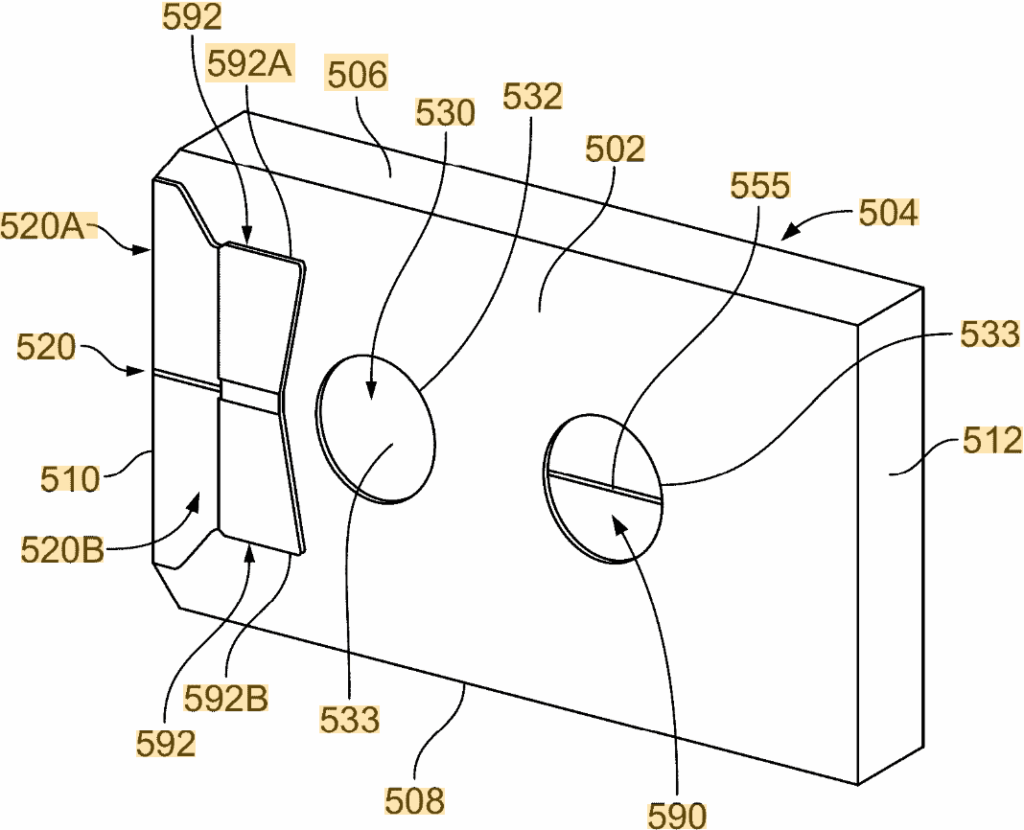
Source- Google Patent
Plastic child-resistant (CR) tubs and tins often create unnecessary waste and can be frustrating for adults to open. On the other hand, many paperboard CR designs fail safety tests or prove too complicated to use. JohnsByrne has tackled this problem with an innovative paperboard CR carton. It utilizes a housing and interlocking insert that “click-locks” securely, requiring a simple two-step motion to open. This makes it child-resistant yet easy for seniors to handle. The carton is primarily made from fiber and has also been tested to meet the 16 CFR Part 1700 safety standard. This keeps branding and visual appeal strong for regulated products like cannabis and nutraceuticals.
Key Details of the Innovation
- Company: JohnsByrne Company (USA)
- Patent Status: US 12,187,509 B2 (Child resistant packaging, granted on Jan 7, 2025). Prior family includes US 10,730,671 B2
- Market Deployment: Commercial CR paperboard solutions actively sold by JohnsByrne (EPIK LOK™ platform).
8. HyCAP™ SecuRE+ PET Closure Technology
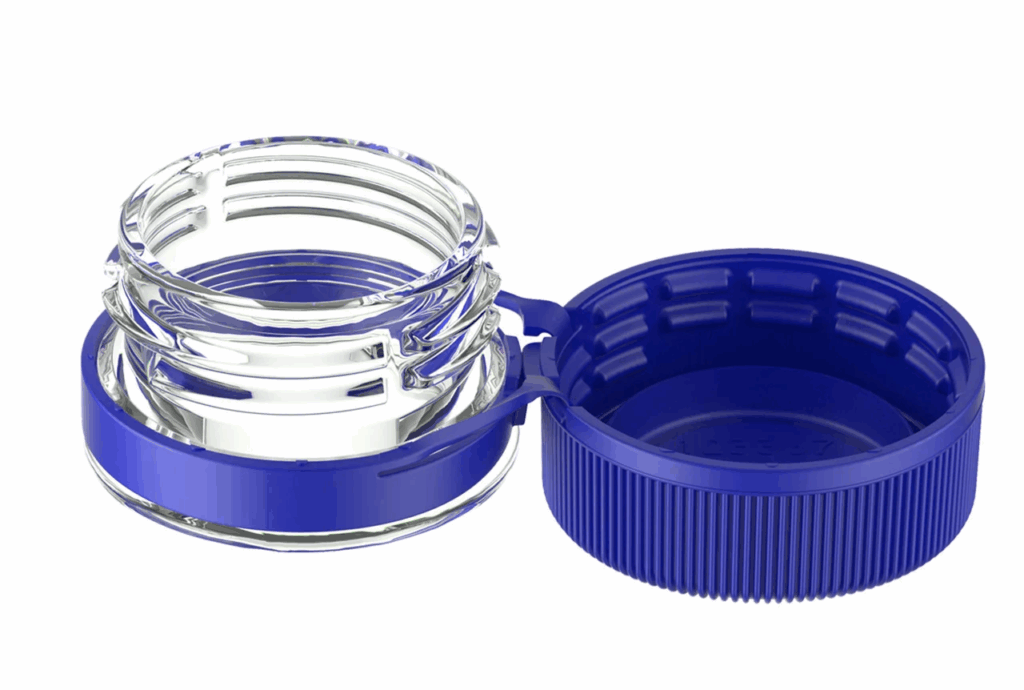
Source- Husky
As PET bottles become lighter with thinner necks and shorter finishes, traditional capping methods are struggling to keep up. These lighter designs can cause problems like tamper-evident (TE) bands not locking properly, requiring more torque during capping, or even causing stress and deformation. The result? Leaks, loose caps, and unhappy consumers. Husky’s new closure-securing method solves this by using a laser to reshape and lock the TE band directly onto the bottle neck. The process works while the bottle is conveyed and sometimes even rotated. This creates a secure seal without the need for excessive torque, making it perfect for modern ultra-lightweight bottles.
Key Details of the Innovation
- Company: Husky Injection Molding Systems Ltd (Canada)
- Patent Status: US 12,297,011 B2 (Method of securing a closure on a container), granted May 13, 2025.
- Funding/Partnership: The 5.89 g KHS “Faktor 101” 591 ml bottle, co-developed with Husky, showcases integrated lightweight bottle and closure design.
- Market Deployment: Husky is actively commercializing lightweight closure + neck ecosystems (e.g., 26/22 GME30.40 conversions) and promoting them in 2025.
- Award/Recognition: Husky’s PET closure work has been highlighted by trade press and shortlisted for sustainability awards (pre-2025)
Also Read: 11 Inspiring Examples of 3D Printing Innovations Powering the World in 2025
9. AeroFlexx Pak

Source- Google Patent
Traditional rigid bottles use a lot of plastic, take up space when shipping, and often crack or leak. Pure pouches also use less material but feel flimsy and can be messy when pouring. The AeroFlexx Pak offers the best of both worlds. It’s a flexible ‘bottle-pouch’ that includes an internal air frame for structure and a self-sealing valve for easy, cap-free dispensing. This makes it sturdy, convenient, and far more sustainable.
Key Details of the Innovation
- Company: AeroFlexx LLC (an Innventure company; P&G-origin tech)
- Patent Status: US 12,071,292 B2 (Flexible recyclable package, granted Mar 4, 2025). Press also cites US 11,548,709 in the protected family for curbside-recyclable, PE-compatible mono-material packs.
- Funding/Partnerships: In 2024, Innventure provided a $10 million term loan to AeroFlexx since the company hadn’t raised new equity by January 1, 2025.
- Market Deployment: ĕleeo brands launched the Boogie® Bubbling Vapor Bath in the AeroFlexx Pak on Aug 12, 2025.
- Award/Recognition: Received APR Critical Guidance Recognition for recyclability in May 2025. Also, won the Packaging Startup Awards 2025 in the “Waste Reduction” category.
Got a packaging idea? Capture it before it slips. Download Triangle IP’s free IDF template (Word & Excel) and turn concepts into patent-ready disclosures.
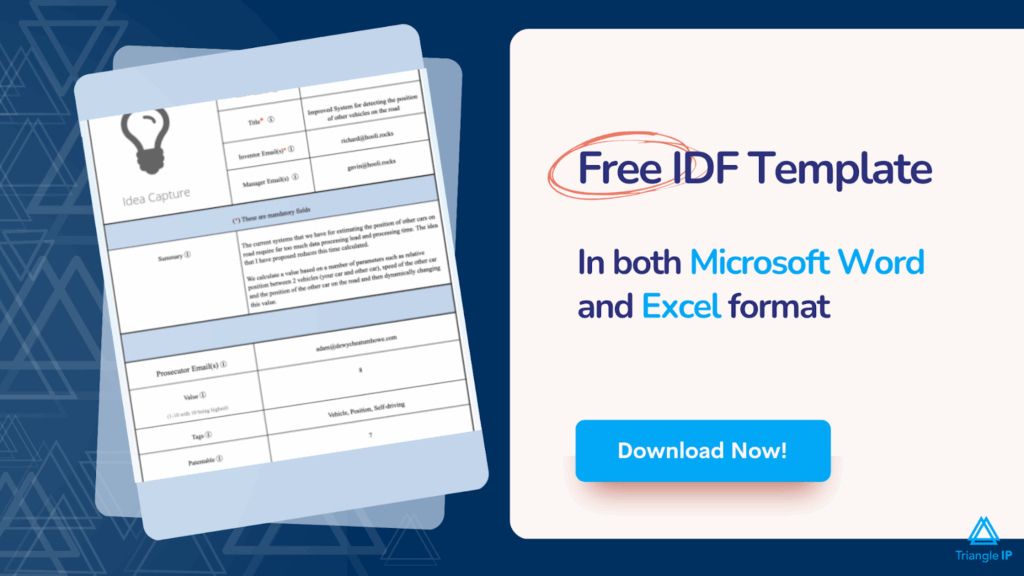
10. P&G Home-Compostable Paper Sachet
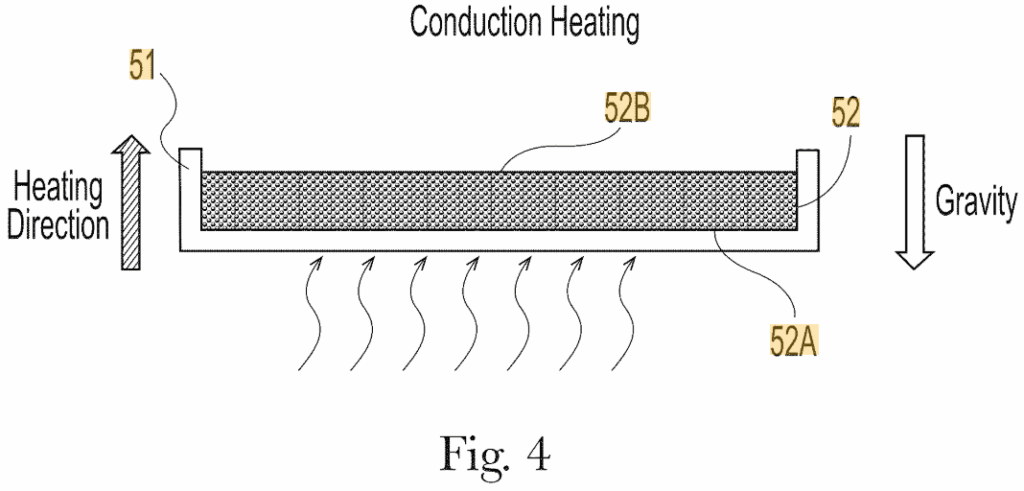
Source- Google Patent
Standard single-use plastic sachets made of foil are tough to recycle and often become litter in hot, humid areas. To solve this, P&G’s 2025 patent introduces a new kind of paper-based sachet. It uses cellulose-rich middle layers containing at least 85% cellulose for strength and structure. The inner coatings are ultra-thin, compostable, or biodegradable, made from materials like PVOH, PBS, or natural wax. These layers are heat-sealed around a small cavity that holds a solid, open-cell foam cleanser. It looks and feels like a regular sachet but is more eco-friendly. The cleanser maintains the same visibility, dispensing ease, and durability as a plastic sachet. Yet it can biodegrade or compost at home without falling apart in humid conditions.
Key Details of the Innovation
- Company: The Procter & Gamble Company (USA)
- Patent Status: US 12,280,573 B2, granted on Apr 22, 2025. Inventors include Stefano Bartolucci, Emily C. Boswell, Su Anne Lee
- Funding/Partnerships: No external funding specific to this sachet disclosed in public sources reviewed.
- Market Deployment: Intended for unit-dose/solid articles (e.g., cleaning or personal care) where home-compostable disposal is preferred. Deployment depends on local composting access and product regulatory approvals.
11. FLEXSEAL WaterBorne Heat-Seal Coating

Source- UFlex
Most heat-seal layers used in paper and paperboard packaging rely on solvents or heavy plastics. While they provide strong seals, they often make recycling difficult and may not meet food safety standards. UFlex has developed a smarter, more sustainable alternative i.e, a water-borne heat-seal coating. This coating makes paper, kraft, and paperboard packs heat-sealable while resisting oil and grease. It even works for paper blister packs, which are usually tricky to seal without plastic. And because the coating is water-based, it supports easier recycling and helps brands move closer to full paperization.
Key Details of the Innovation
- Company: UFlex Limited (Chemicals Division; India)
- Patent Status: Indian Patent No. 567989 (“Waterborne Heat Seal Coating Composition and Process for Its Preparation”), granted between July 22–25, 2025.
- Funding/ Partnerships: UFlex’s 2025 investor materials show an in-house water-based adhesives & coatings platform (incl. heat-seal and barrier coatings).
- Market Deployment: Announced for food wraps, takeaway boxes, and paper/paperboard blister use; part of UFlex’s commercial Chemicals portfolio (inks, adhesives, coatings)
Also Read: Beverage Packaging Innovation: 20 Examples from Around the World
You’ve just seen what “good” looks like in 2025. If these wins sparked ideas, don’t let them fade. Up next, We will show you how to turn ideas like these into real IP and launches, so your best concepts don’t stall.
Protect Your Sustainable Packaging Innovations With Triangle IP’s TIP Tool™
From mono-material barriers to fiber bottles and paperized seals, 2025’s sustainable packaging innovations prove one clear point. Teams that capture ideas quickly, and guide filings with data are the ones winning the race from lab to launch. Triangle IP’s TIP Tool™ is built exactly for that.
With this tool, you can:
- Capture invention disclosures instantly with Idea Capture (simple, customizable form, attachments, smart scoring).
- Collaborate live with Real-Time Collaboration (co-edit, comment, @mentions, role-based access).
- Track each submission end-to-end using Patent Pipeline Visibility (drag-and-drop stages, automatic routing, notifications).
- Estimate effort and ROI via Case Analytics & Cost Estimation (success likelihood, projected costs, family view).
- Analyze outcomes using Patent Counsel & Examiner Statistics (allowance rates, OA patterns, firm benchmarking).
- Sync status automatically through Automatic USPTO Updates (public + Private PAIR-based updates, clear alerts).
- Visualize portfolio health with Dashboards (role-based views for inventors, managers, counsel).
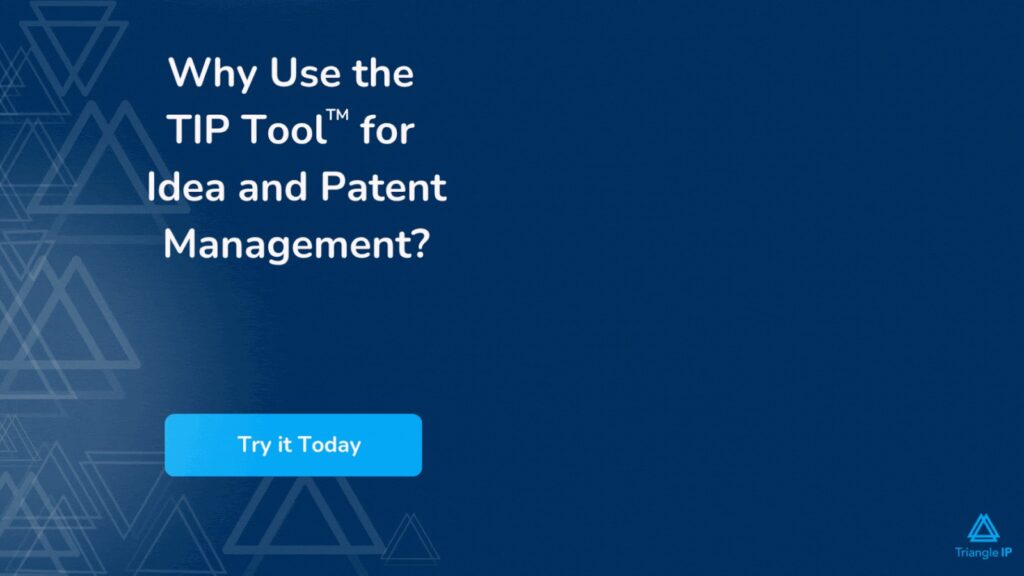
Ready to turn this year’s sustainable-packaging breakthroughs into defensible IP and faster launches?
Start your free TIP Tool™ trial today and run your entire patent workflow with clarity and speed.
Disclaimer: The information in this article is for educational and informational purposes only and reflects publicly available sources as of the publication date. Accuracy and availability may change; please verify product claims, patents, certifications, awards, and launch details directly with the respective organizations. All trademarks and patents are the property of their owners.
FAQs
1. Which Companies Use Biodegradable Packaging?
Big brands and retailers are already using biodegradable or compostable packs. PepsiCo’s Frito-Lay launched industrially compostable Off The Eaten Path bags and keeps compostability in its packaging roadmap. Unilever reports progress toward making all plastic packaging reusable, recyclable or compostable on extended 2030/2035 timelines. Lush also pushes “naked” formats and says its packaging should be reused, recycled or composted.
2. What Is a Sustainable Packaging Design?
Sustainable packaging design means making packages that do their job with less impact. You use less material, choose recycled or renewable options, and avoid mixes that are hard to recycle. You plan for a clear end of life, whether recyclable, compostable where available, or reusable, and provide simple disposal instructions.
3. Is Paper Always Better Than Plastic?
Not always. Paper is renewable and often curbside-recyclable, but it can be heavier (higher transport emissions) and may need coatings for barriers. Plastics can be lighter and tougher, reducing damage and shipping weight, but their end-of-life management can be challenging. The ‘better’ choice depends on the product, supply chain, and local access to recycling/composting.
4. What Are the Sustainable Packaging Trends in 2025?
The top sustainable packaging trends in 2025 includes:
- Paperization with performance: Ultra-high-barrier papers, water-borne heat-seal/grease-resist, paper pouches and trays that pass paper-stream tests.
- Mono-material flexibles and fitments: Recyclable PP/PE laminates, SiOx/AlOx barriers, recyclable coffee valves, cap tethering/light-weight closures.
- Fiber bottles and thin liners + curbside-ready shippers: Molded-pulp bottles with minimal liners; PET-only insulated liners replacing EPS.
- Data-driven design and compliance: Higher PCR content, meets EPR rules, adds disposal QR codes, and applies AI tools for quick LCA, and cost insights.
5. What Are the 7 R’s of Sustainable Packaging?
The 7Rs of sustainable packaging are as follows:
- Rethink (design for lowest impact)
- Refuse (skip unnecessary components)
- Reduce (lightweight, right-size)
- Reuse (refill/return systems)
- Replace (switch to safer, renewable or recycled materials)
- Recycle (mono-material, clear labeling)
- Recover (capture energy/material value where recycling isn’t possible
6. What Are the Criteria for Sustainable Packaging?
Sustainable packaging should meet four tests:
- Fit-for-purpose with less material: Right-sized, lightweight, and protective to prevent damage/returns.
- Better inputs: High recycled/renewable content, responsibly sourced fiber (e.g., FSC), and low-tox inks/adhesives.
- Clear end-of-life: Mono-material where possible, widely recyclable or compostable with local infrastructure, and honest on-pack instructions.
- Proven lower footprint and compliance: LCA confirms reduced CO₂, energy, and water use, with food-safe and label-ready design.
